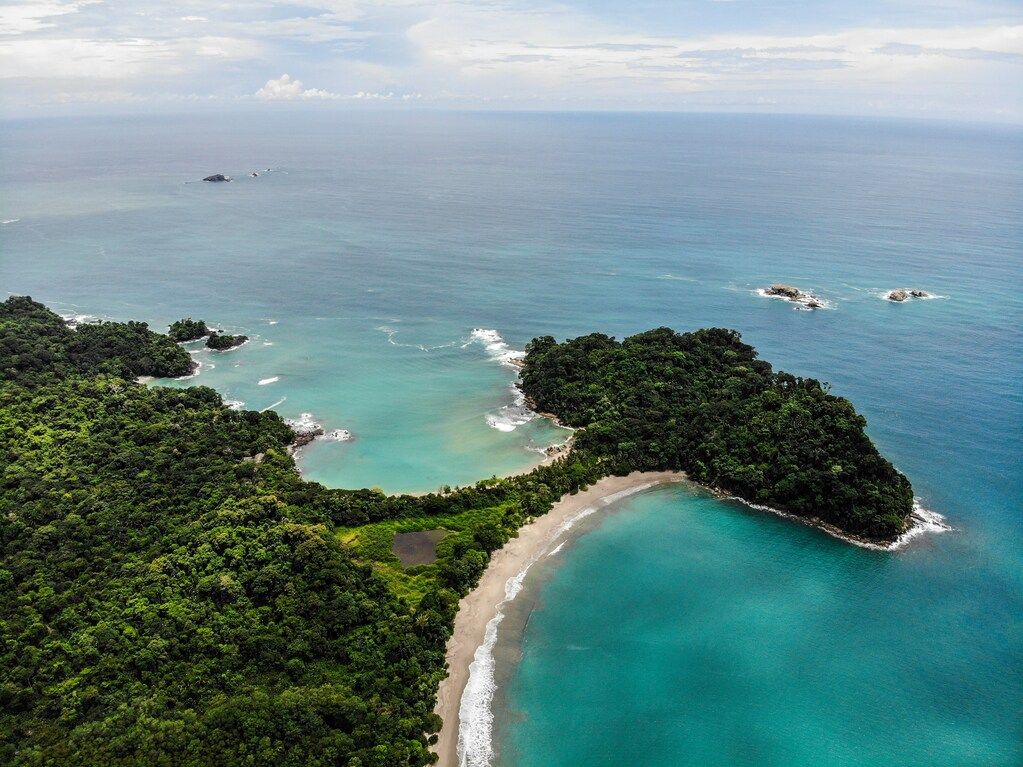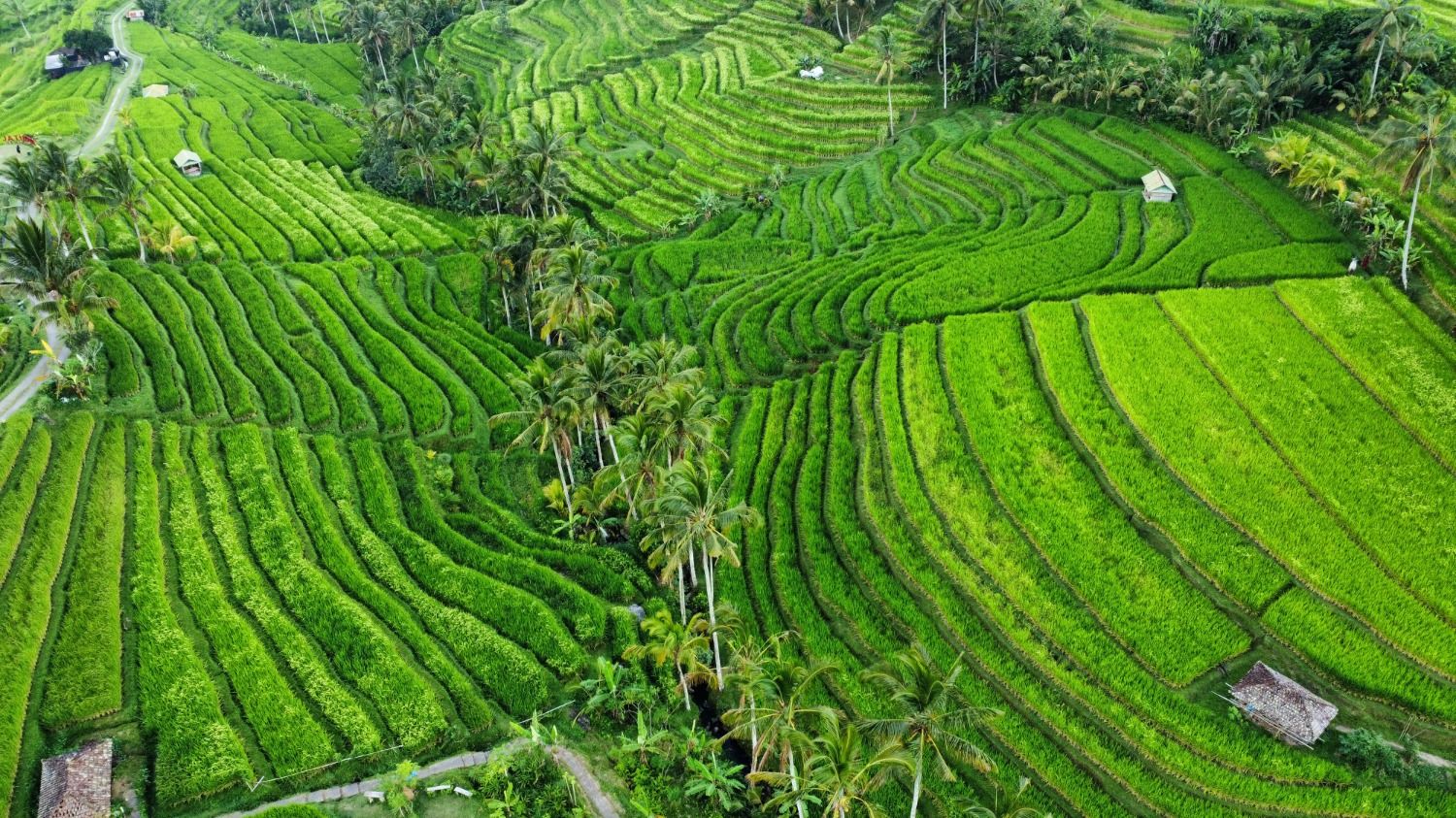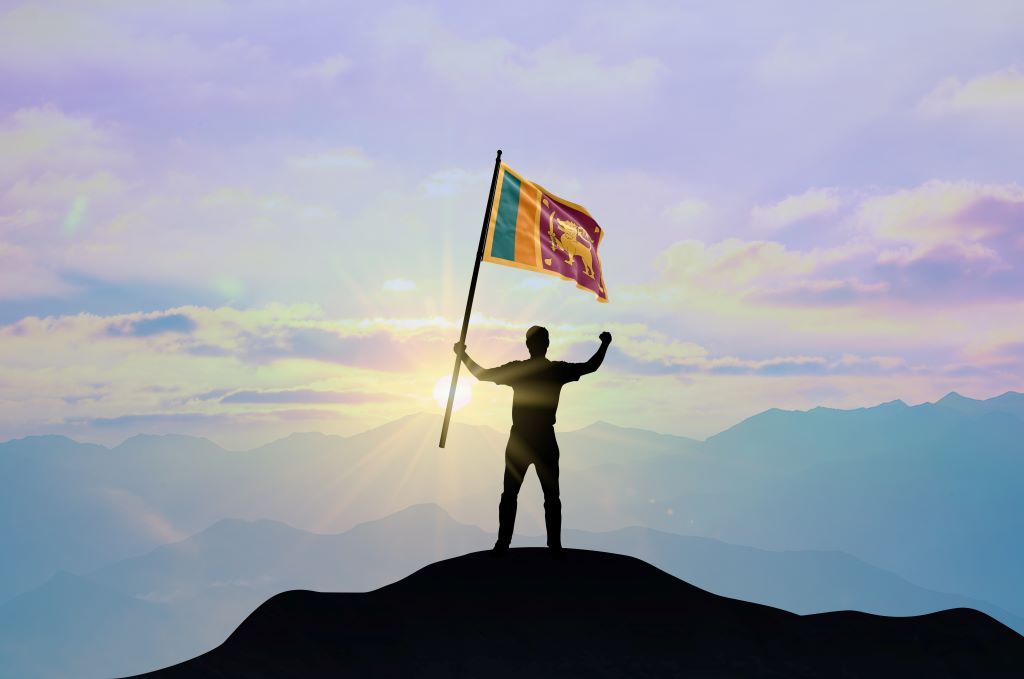

More and more travellers are choosing Sri Lanka as a holiday destination. This island nation is quickly becoming one of the coolest places in Asia, thanks to its beautiful beaches, spectacular history and amazing wildlife. Before you start checking out flight prices, it’s worth considering the time of year you plan to visit. As a tropical country, Sri Lanka doesn’t have the classic four seasons that you may be used to, and your experience will be very different depending on whether you visit Sri Lanka in the rainy season or the dry season.
A game of two halves
The ideal time to visit Sri Lanka depends on where you want to travel. The island is affected by two different monsoons, so the east and west coasts have their wet seasons at different times. The good news? There’s always somewhere in Sri Lanka that’s worth visiting! Generally speaking, the west and south coasts are at their best between December and April, while you should visit the east coast from May to October.
That’s a very rough description of Sri Lankan weather. Want a deeper insight into the best month to visit Sri Lanka? Keep reading!
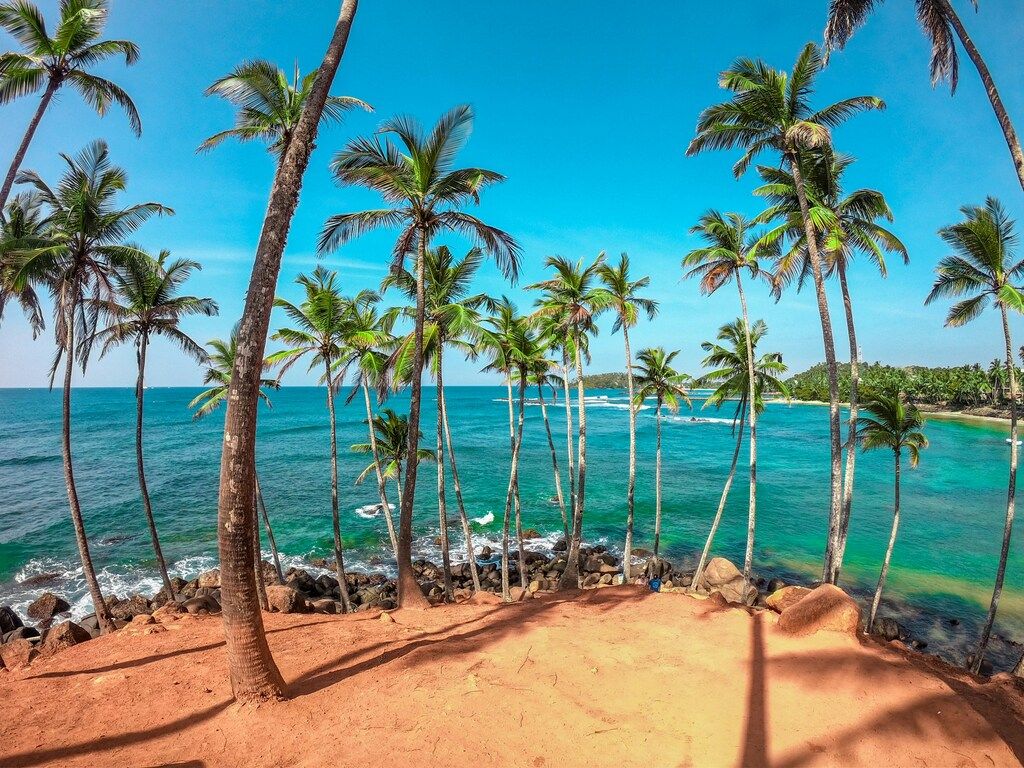
A month-by-month guide to the best time to go to Sri Lanka
January
This is a good time to travel to Sri Lanka if you’re going to the centre, west or south. The country’s famous cultural triangle, which contains several ancient cities, sacred temples and UNESCO World Heritage Sites, is sunny and dry during the month of January. On the other hand, the east coast is still going through monsoon season, so you’re better off skipping it if you’re travelling to Sri Lanka in January.
February
Like January, February sees warm, sunny days on the west and south coasts. In the east, the wet season is coming to an end, but there will still be heavy rains on some days, so this is not the best time to travel to Sri Lanka if you want to visit the east. One thing to keep in mind is that the country celebrates Independence Day on the 4th of February. This can lead to businesses closing their doors and tourist hotspots becoming overcrowded.
March
What a great time to go to Sri Lanka! This is one of the few times of the year when you can reliably visit every part of the country. There may still be a little rain left in the east, but the worst of the monsoon is over, and the wet season hasn’t started yet in the west and south. This means that March is a great month for a cross-country trip.
April
April marks the end of the dry season in the south and west of the island. This means that the humidity starts to rise, so the hot, sticky days can make outdoor activities tricky. If you plan to do a lot of hiking, you might want to visit in a different month. April is a great time to visit Sri Lanka’s inland Hill Country, which includes the beautiful city of Kandy, as the weather there is warm but not overly hot. Keep an eye out for the dates of Tamil New Year, which usually takes place in mid-April.
May
If you want to see a traditional Sri Lankan festival, then May is a good time to visit, as you’ll be able to enjoy the Festival of Lights or Vesak Full Moon Poya Day. This is a good time to visit Sri Lanka’s east coast while the south, west and central regions start to have the first rains of the wet season. Strong winds mean that the beaches on the south and west coasts see very big waves during this month, so swimming in the sea is not a good idea.
June
As summer starts to arrive in the northern parts of the world, Sri Lanka is divided into two very different halves. In June, the south and west are battered by monsoon rains and winds, while the east is looking perfect for a beach getaway.
July
July has similar weather to June, making it another good time to visit the east coast and steer clear of the wet west and south. This month also sees several religious festivals. In Kandy, the Festival of the Tooth takes place in either July or August. This can be a great experience for travellers who want to soak up a bit of the local culture. You’ll see people parading through the city while the nights are lit up by swirling fire dances.
August
August is a great time for a holiday in Sri Lanka. The rain in the south and west drops significantly this time of year. The monsoon might not be over yet, but the days are a heck of a lot drier than in June and July. If you want a beach holiday for the summer, this is one of the best places in Asia.
September
September is not a great month for Sri Lanka weather. In the south and the west, the rains tend to pick up again after a fairly dry month in August. Meanwhile, the east coast tends to have good weather for a couple of weeks, but the monsoon begins in mid-September. However, September may be the best time to travel to Sri Lanka for whale watching, at least on the east coast of the island. Go to Trincomalee to see majestic blue whales on their migratory journeys. You’ll need to wait a couple of months to see whales elsewhere.
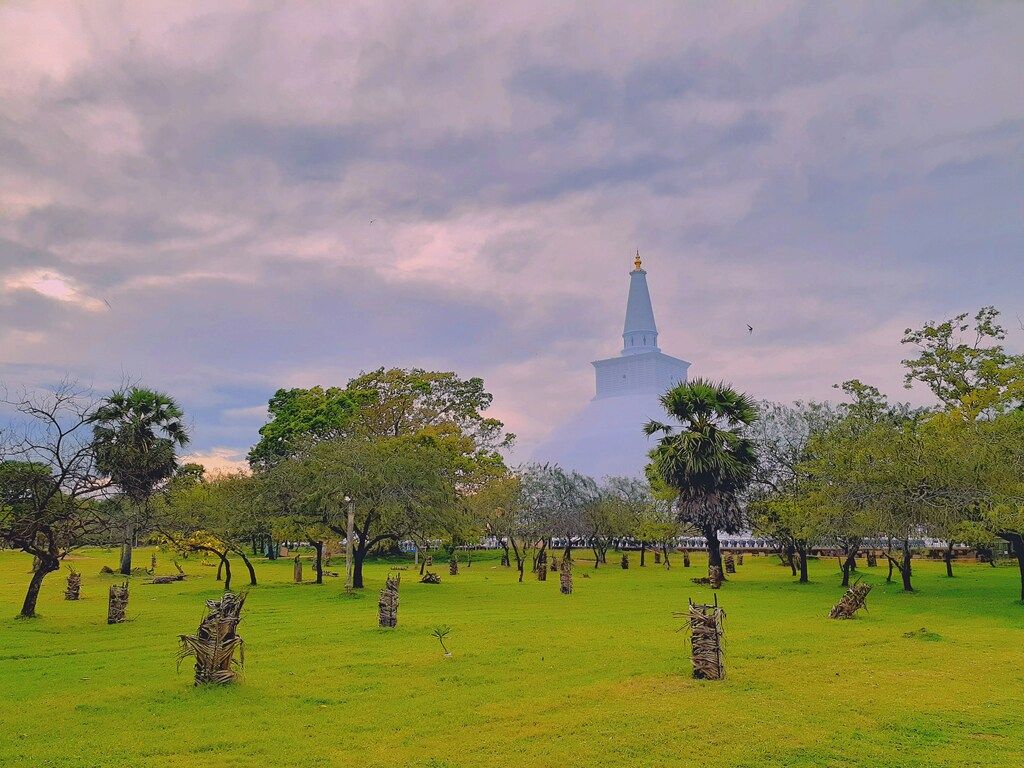
October
October is a transitional time for Sri Lankan weather. The monsoon is still in action in the west and the south, bringing plenty of rain with it. At the same time, the wet season in the east is starting to really make itself felt. It can be hard to escape the rain no matter which part of the island you visit.
November
If you visit Sri Lanka in late November, you’ll find that the dry season is beginning in the south and the west. By now, east coastal areas are really starting to feel the effects of the monsoon. Diwali takes place in October or November, with celebrations from Sri Lanka’s Hindu minority and an increase in tourism from nearby India.
December
Fancy a Christmas getaway? December in Sri Lanka sees good weather in the south and the west, so the beaches are once again an excellent choice for holidaymakers. The southern whale-watching season starts, too. Steer clear of the north and east during this month, as the wet season will be in full swing.
What to expect in the Sri Lanka wet season
Of course, you might not always be able to time your holiday for the absolute best time to travel to Sri Lanka. If the weather isn’t perfect, don’t worry — you can still enjoy your trip to this South Asian jewel!
The first thing to know is that the wet season is never completely predictable. When you speak with travellers who have already been to Sri Lanka, they’ll often tell you they were surprised by the weather. The words “wet season” don’t mean that it rains all day, every day. Even at the height of the monsoon season, you might enjoy clear, blue skies — but nevertheless, you should be prepared to get wet.
In a normal wet season, you’ll find that, in general, it tends to rain more in the afternoon than in the morning. This is a tropical country, so when it rains, it pours — quite literally! The rains here are very strong. Don’t expect gentle drizzle! An umbrella is unlikely to provide much protection. Instead, you’ll want to make sure you have a good rain jacket.
That being said, one thing you might not expect from the wet season in Sri Lanka is how quickly it dries up. It’s common to experience an hour or two of solid, lashing rain that turns to sunshine in the blink of an eye. This works both ways — the blue sky might fill up with grey clouds without warning, too. One thing’s for sure: you’ll always be on your toes during the wet season!
What to expect in the Sri Lanka dry season
If you think the dry season is the best time to visit Sri Lanka, you’re probably right, but be prepared! Again, weather in the tropics is often unpredictable. Freak storms during the dry season are known to happen from time to time.
During the dry season, Sri Lanka temperatures can be extremely hot. The Eastern and North Western Provinces are the hottest parts of the country, with the mercury hitting around 32°C most days. Depending on where you’re staying, you can’t expect much relief at night time, either. In the Central and Uva Provinces, nights are cool and pleasant, but in other parts of the country, you’ll need to sleep with the fan on.
Keep in mind that the climate in Sri Lanka can feel quite different depending on when in the dry season you’re travelling. If you come at the tail end of the dry season, the humidity soars, leaving you sticky and uncomfortable. High humidity also brings the dreaded possibility of mosquito bites! Most accommodations in Sri Lanka will provide mosquito nets over the bed. Make sure to use yours!
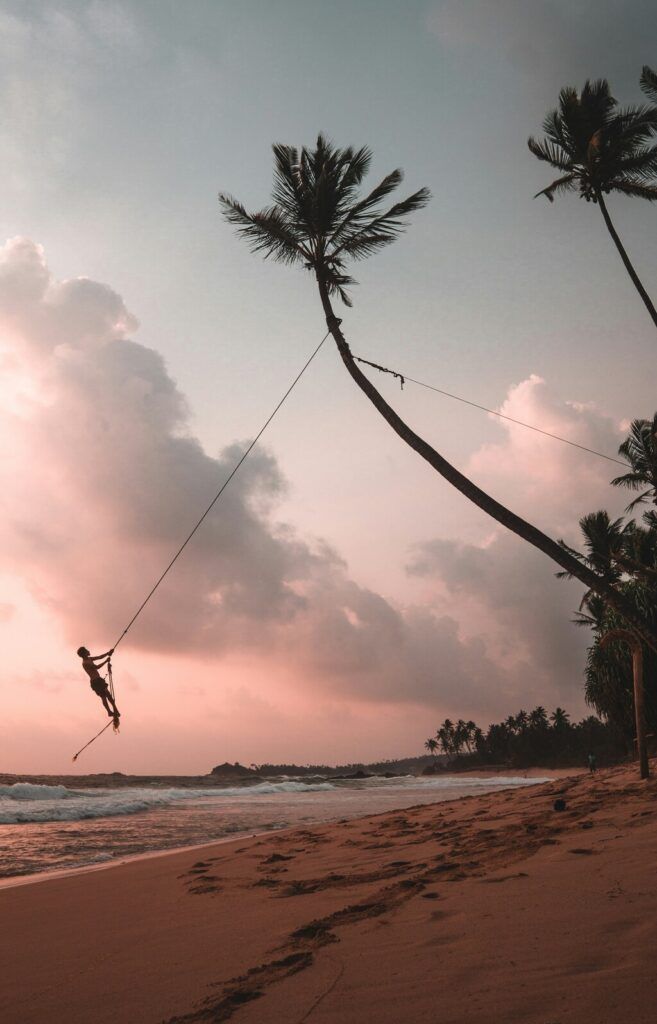
Seasonal events in Sri Lanka
Many travellers want to know the best time to visit Sri Lanka for whale watching. The island nation is renowned as being one of the best places in the world to see whales. In fact, many people claim that Sri Lanka whale-watching trips have a 90% success rate, which is unheard of in other countries!
Like with so many other things in Sri Lanka, it all depends on where you’re going. If you’re heading to the eastern area of Trincomalee, you can see whales from May to September, with September being the peak month. In the southern town of Mirissa, they are most active from November to April. The height of the season runs from late February through the month of March.
Sri Lanka is also becoming increasingly popular for scuba divers, as it offers beautiful reefs, thriving marine life, and some of the most interesting wreck dives in the world. Again, you’ll be able to dive in different parts of the country depending on the season. You can dive in the west and south-west from October to May and the east coast from May to October.
Sri Lanka is waiting for you
We’ve chosen the best Sri Lankan itineraries for every time of year. Our classic Sri Lanka 360 tour focuses on the west of the island and runs throughout the year — except when that area is affected by the monsoon. During that time, you can join us on our Sri Lanka summer adventure, which will take you up to the gorgeous beaches in the north-east. Whichever tour you go on, you’ll enjoy stunning scenery, world-class culture and the chance to see some of Asia’s most beautiful wildlife roaming free. Which one will you choose?
Frequently Asked Questions: The Best Time to Visit Sri Lanka
What’s the best time of year to visit Sri Lanka?
The best time to visit depends entirely on which part of the island you plan to see. Sri Lanka has two different monsoon seasons affecting different coasts at different times. For dry, sunny weather:
- Visit the West and South coasts from December to April.
- Visit the East coast and the North from May to September.
When should I visit the west and south coasts (e.g., Colombo, Galle, Mirissa)?
The ideal time to explore the west and south coasts is from December to April. During these months, the weather is typically dry and sunny, making it perfect for beach holidays and exploring cities like Colombo and Galle.
When is the best time to visit the east coast and the north (e.g., Arugam Bay, Trincomalee)?
The best season for the east coast and the northern regions is from May to September. This period offers the driest and sunniest weather, ideal for activities like surfing in Arugam Bay and visiting Trincomalee.
What are the monsoon seasons in Sri Lanka?
Sri Lanka experiences two distinct monsoon seasons that affect opposite sides of the island:
- The Yala monsoon brings rain to the west and south coasts from May to September.
- The Maha monsoon brings rain to the east coast and the north from October to February.
What is the weather like during the ‘inter-monsoon’ periods?
The inter-monsoon periods occur in October-November and March-April. During these months, weather can be unpredictable across the entire island, with a higher chance of rain and thunderstorms everywhere. However, the rains are often short, sharp downpours rather than all-day events.
Is there a single month that’s good for visiting the whole country?
While challenging, the months of March and April generally offer the best chance for good weather across the entire island. This is the inter-monsoon period when conditions are relatively settled before the Yala monsoon begins.
What are the average temperatures in Sri Lanka?
Sri Lanka has a tropical climate with fairly consistent temperatures year-round. Coastal and lowland areas typically have average temperatures between 26°C and 30°C. The central highlands, like Kandy and Nuwara Eliya, are cooler, with temperatures ranging from 15°C to 20°C.

